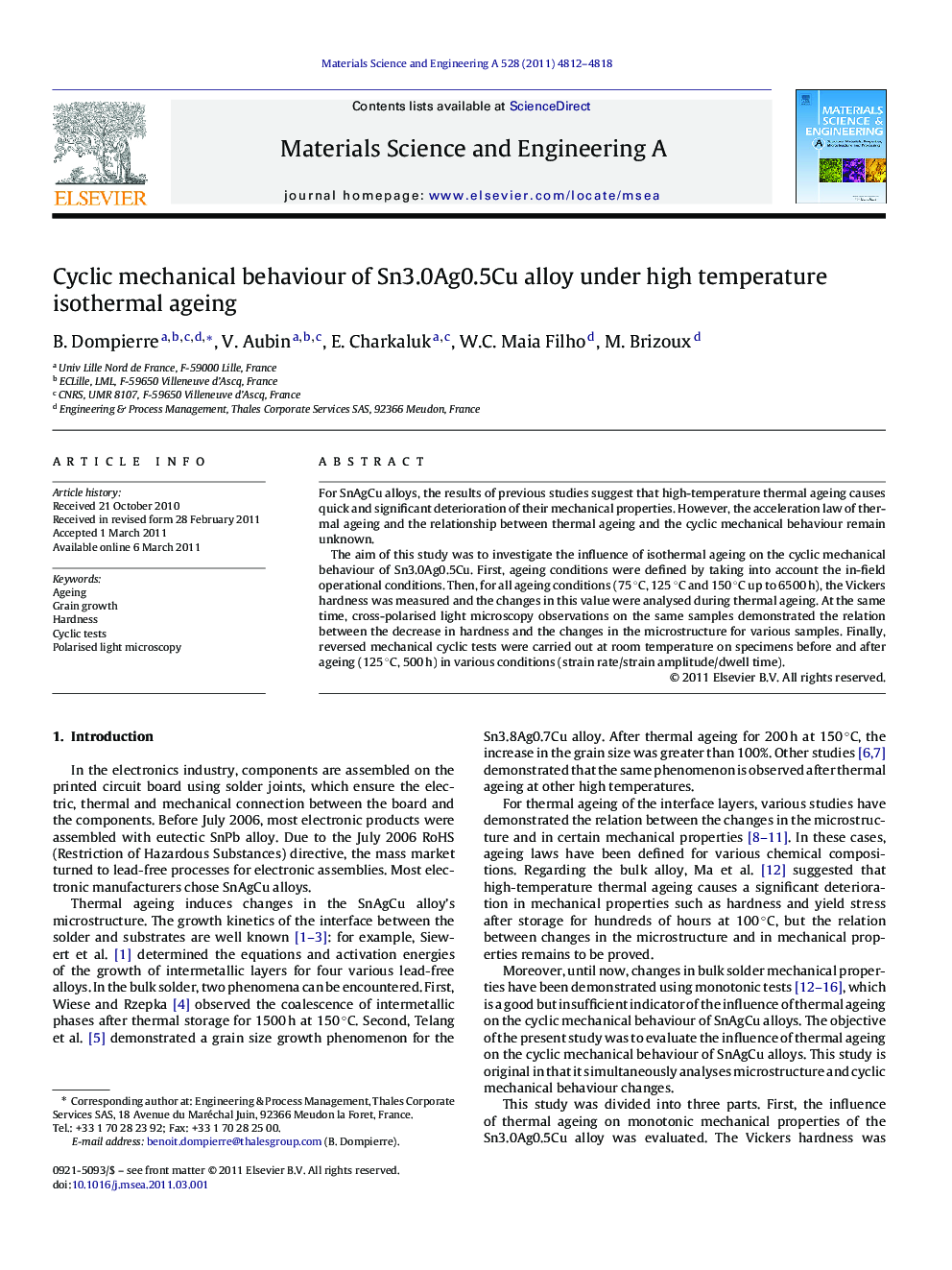| Article ID | Journal | Published Year | Pages | File Type |
|---|---|---|---|---|
| 1578757 | Materials Science and Engineering: A | 2011 | 7 Pages |
For SnAgCu alloys, the results of previous studies suggest that high-temperature thermal ageing causes quick and significant deterioration of their mechanical properties. However, the acceleration law of thermal ageing and the relationship between thermal ageing and the cyclic mechanical behaviour remain unknown.The aim of this study was to investigate the influence of isothermal ageing on the cyclic mechanical behaviour of Sn3.0Ag0.5Cu. First, ageing conditions were defined by taking into account the in-field operational conditions. Then, for all ageing conditions (75 °C, 125 °C and 150 °C up to 6500 h), the Vickers hardness was measured and the changes in this value were analysed during thermal ageing. At the same time, cross-polarised light microscopy observations on the same samples demonstrated the relation between the decrease in hardness and the changes in the microstructure for various samples. Finally, reversed mechanical cyclic tests were carried out at room temperature on specimens before and after ageing (125 °C, 500 h) in various conditions (strain rate/strain amplitude/dwell time).
► Ageing ends (95% achieved) in SnAgCu alloy after about 500 h at 125 °C. ► Link between hardness drop, grain growth and drop in yield stress. ► Gap between results on as-received and aged materials is about 30%.
